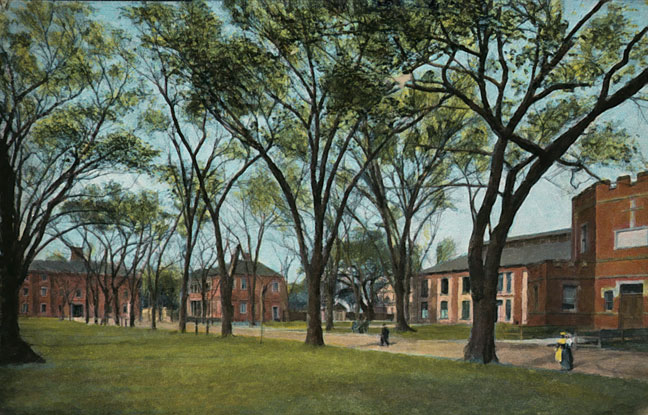"Porter Military Academy"
Available on Giclee Canvas
12x18 .....$ 89.00
16x24 .....$139.00
20x30 .....$250.00
24x36 .....$360.00
28x42 .....$495.00
Expectations Studio LLC
1256 B Ben Sawyer Blvd
Mount Pleasant, SC 29464
The Porter Military Academy site reflects several eras of Charleston history--from major events in the city's settlement, to Civil War and Reconstruction, and more recently important 19th and 20th century educational institutions. As early as the 1700s, the site was used as a potter's field or pauper's graveyard. In 1825, the Federal government acquired the land for a new United States Arsenal, which was partially built sometime thereafter, and greatly enlarged in the 1840s. The Confederate army strategically seized the Arsenal at the outbreak of the Civil War, as it contained valuable arms able to supply three military divisions. Federal troops took over the Arsenal in 1865 and remained there during Reconstruction until 1879, when it was leased to Reverend Anthony Toomer Porter, a prominent educator and clergyman.
Dr. Porter, a former South Carolina rice planter, entered the ministry in an attempt to bring order out of the confusion following the Civil War. In 1867, mourning the death of his own son, Reverend Porter founded the Holy Communion Church Institute with his wife, to educate former soldiers and young boys left orphaned or destitute by the war. Dr. Porter's efforts to convert the former arsenal into his expanding educational facility was strongly supported by former Union General William T. Sherman. Holy Communion Church Institute moved to the arsenal in 1880, and became known as the Porter Military Academy by the late 19th century. The school added new buildings to the complex, while using and adapting the existing arsenal buildings for educational needs. In need of a school chapel, Dr. Porter remodeled the artillery shed in 1883 by removing the roof, raising the walls, and adding a Gothic roof and stained glass windows. Now known as St. Luke's, the artillery shed's window and doorway openings are still evident in the chapel today.
In 1964 the Medical University of South Carolina purchased the school. Many of the original buildings were demolished to make room for the heart of the Medical campus, but the remaining buildings represent the site's diverse history of uses. Only two remain from the Arsenal complex--St. Luke's Chapel, and Colcock Hall, one of two surviving military buildings in South Carolina built by the Confederate government. The brick walls along Ashley Avenue surrounding the school also date to the late 19th century, and are largely the work of Holten Bell, a prominent African American builder. The Waring Historical Library is the only remaining building from several built by Dr. Porter and a unique building for the State. A Gothic octagonal library with square reading rooms, the building was donated by and named for leading New York clergyman Reverend Charles Frederick Hoffman. Now known as the Waring Library, the current library commemorates Dr. Joseph I. Waring, one of the Medical school's early professors and historian.

